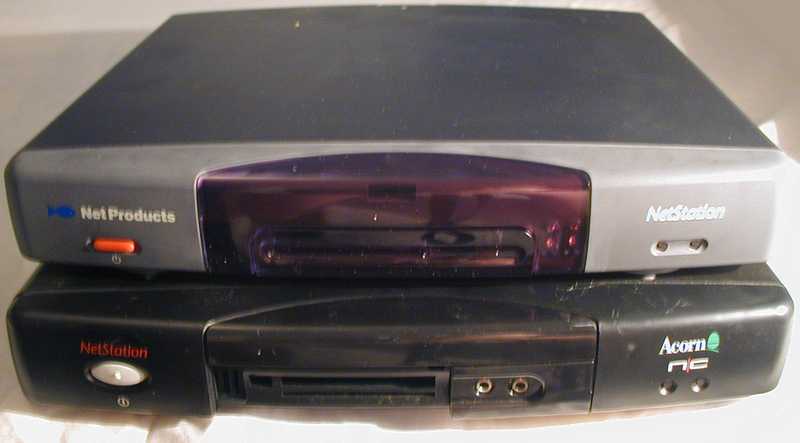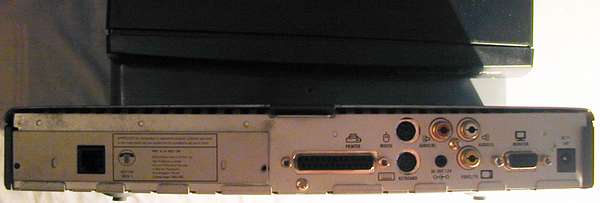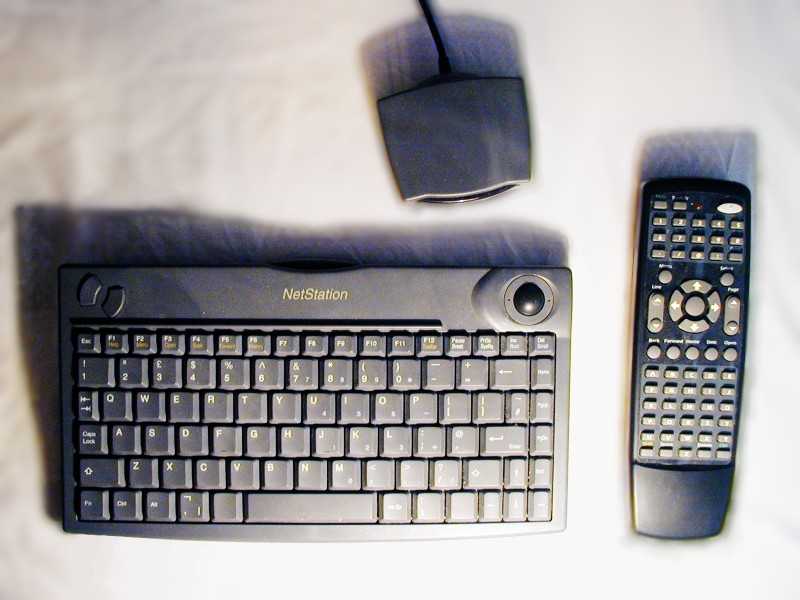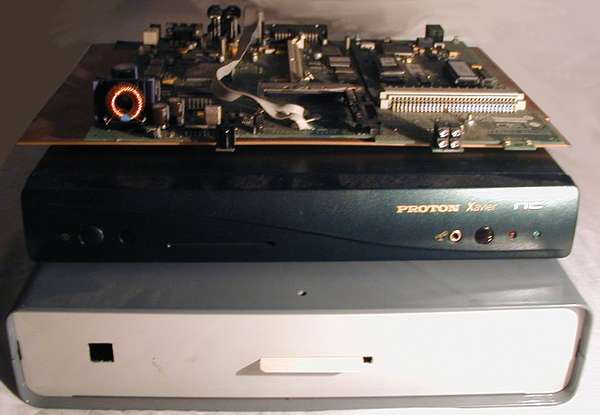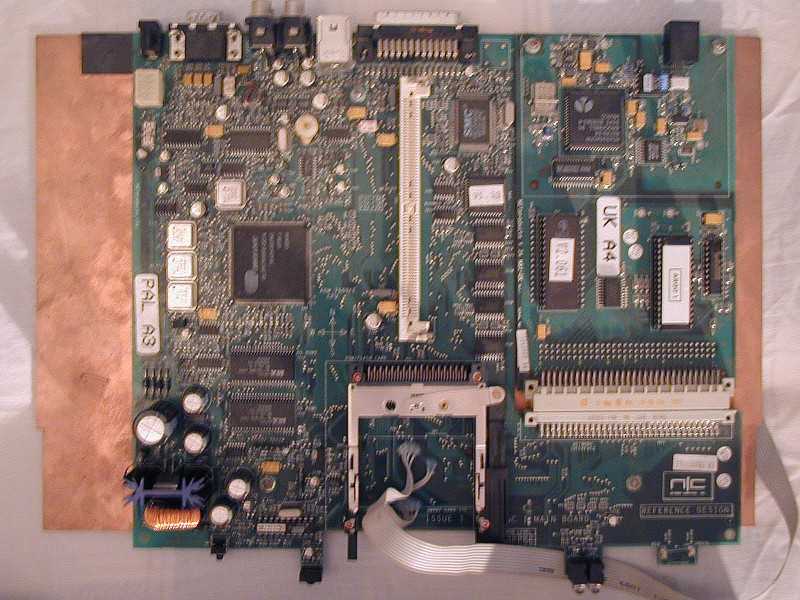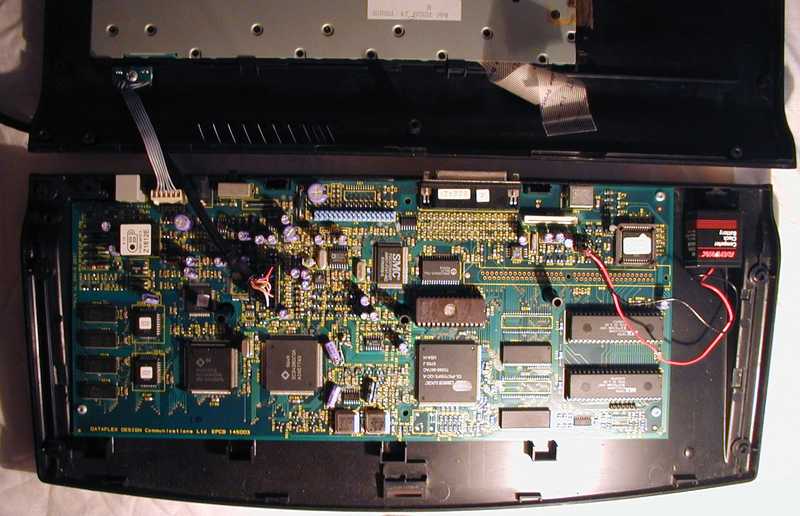Network Computers
Cut down computers to bring the Internet in to the home.
NCs, or Network Computers to give them their full name, were an attempt by Acorn and other interested parties like Oracle, to bring cut down computers in to the home. They got you on to a network (usually, but not exclusively, the Internet) and servers would do all the clever stuff, which I guess is where Oracle came in. A bit like dumb terminals of the past, but with full colour, graphical displays. This meant the client hardware (based on Acorn's A7000 running NCOS, an NC specific cut down RISC OS, in this case) could be cheap and cheerful. The revenue stream would come from providing connectivity and extra functions; that's where all the money is in mobile phones after all. However, despite initial interest from tech companies, there was never any real world demand for them so they died off. Maybe they were an idea before their time, but essentially most people at the time were happier to get a full blown computer, or just not bother at all.
Browsing on a TV isn't great - a TV has a smaller screen size (in number of pixels) than most PCs, and the sucky resolution (number of actual pixels per inch), sitting further back from the screen and general image fuzziness effectively reduces that much further. You also typed and navigated using a big remote control, unless you forked out for the wireless keyboard with built in trackball. The rather poor NC variant of Ant's Fresco browser - called NCFresco - built into each machine didn't help, with no font tag support, no CSS, no Javascript support, bad navigation in nested tables, and so on. Later versions were better, but the NCs couldn't be easily upgraded as the OS and programs were in ROM. If you wanted to do anything other than Web browse - such as word processing, which the device supposedly "supported" - you needed an ISP that handled all of this, as the NC itself has no storage, so there's nowhere locally to save documents to. Of course, most ISPs had never heard of Acorn, and didn't support NCs. There were a few cyber cafés that used NCs with network instead of modem cards, used proper monitors instead of TVs, and had proper keyboard and mouse input rather than the supplied glorified remote control, which might have helped, but ups the price to where a cheap Linux or even Windows PC can compete quite well.
Where the company I worked for came in was a request to write drivers for Zip drives, which were essentially 100MB über floppy drives that ran off the standard printer port. They also had an ISP division and so could support the devices in other ways, but the Zip drive was where the most money came from: these turned the NC into an ideal demo machine. For very little outlay you had a machine capable of displaying quite complex graphics on TVs, and running for days without crashing, even with user input. I went on to design demos, slideshows, movie player front ends and so on for a number of companies.
Rarities
Above are a few rare NCs that I picked up when the company moved offices. The Proton I don't think ran NCOS - and ran even slower than the regular NCs because of it. Below that is a design so early that it has a nasty off-the-shelf case, and above is one that doesn't have a case at all!

The bare board is the NEI varient that was supposed to be built into TVs themselves; I did a rather nice slideshow with synced audio (fades timed to a voiceover, music and so on), only to have it returned as completely out of sync. Turns out that this board is faster than the regular NCs, so I had to build in three timing multipliers for the demo - an NC, an NEI NC, and the much faster RiscPC I was doing all the work on. As for getting it to run in 2019 to output a video, that's another set of loops within loops to slow it down.
The two pics on the right are another prototype which got much further - it's a rather nice Surfboard NC from a company called Dataflex, a division of Amstrad. Not entirely sure why this didn't make it into production, but I think there was a problem with the audio interfering with modem throughput (or vice versa). It's essentially a cut-down A7000 (which is itself a cut-down RiscPC), and would have made a nice hacker toy - it even has a header onto which you can wire a floppy drive cable.
